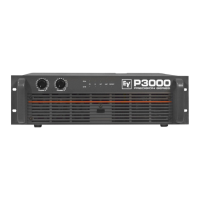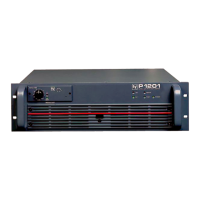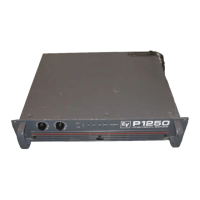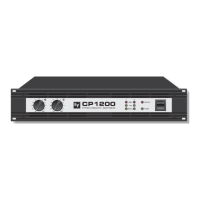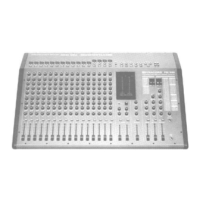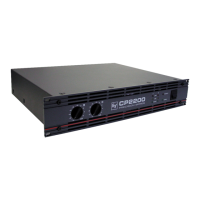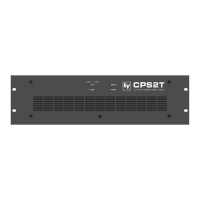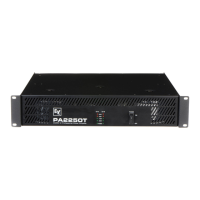
Do you have a question about the Electro-Voice PA1250T and is the answer not in the manual?
| Type | Power Amplifier |
|---|---|
| Power Output | 1250W |
| Channels | 2 |
| Output Power (70V/100V) | 1250W |
| Frequency Response | 20Hz - 20kHz |
| Input Impedance | 20kΩ |
| Output Impedance | 70V/100V |
| THD+N | < 0.1% |
| Signal-to-Noise Ratio | > 100dB |
| Protection | Thermal, short circuit, overload |
| Cooling | Fan cooled |
Details the process of unpacking the amplifier and the warranty period.
Provides guidance on properly installing the amplifier in various environments.
Explains the function of the unit's power switch and soft-start feature.
Describes the Protect LED and its indication of integrated protection circuits.
Explains the Limiter LED and its indication of signal clipping or maximum capacity.
Details the function of the level indicators for amplifier modulation.
Describes the Power indicator and troubleshooting for power issues.
Explains the electronically balanced inputs and connection recommendations.
Describes how to set the amplifier channel's overall amplification.
Details the different operating modes (DUAL, PARALLEL, BRIDGED).
Explains the function and cut-off frequency settings of the Hi-Pass filter.
Details speaker output jacks, polarity, and impedance for various models.
Explains the function and replacement of the mains fuse.
Instructs checking the voltage selector and connecting the mains socket.
Details the sliding switch for changing mains voltages and fuse replacement.
Recommends balanced cables for LF-signal connection and explains wiring.
Provides examples for connecting balanced XLR and unbalanced phone jack signals.
Provides tables for determining power supply and cabling requirements.
Explains heat dissipation and provides tables for calculating temperatures.
Specifies max output power for different load impedances and THD.
Lists power consumption figures at maximum output and rated conditions.
Specifies the required AC power voltage and frequency.
Lists the various protection mechanisms integrated into the amplifiers.




